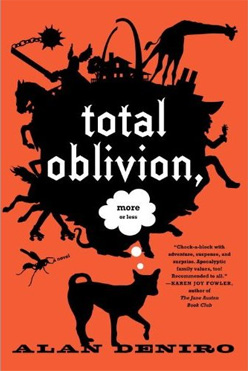Notes on Worldbuilding
A really compelling blog post/article on Second Life vs. World of Warcraft, that sheds some life for me on what I’ve been thinking about this. I’m usually down with Mr. Harrison’s screeds, but I would think that any worldbuilder worth his or her salt (re: Calvino, Borges, for starters) are aware of, and build into their story structures, a knowledge of the limitations of worldbuilding. This knowledge might be sly or elegaic, but whatever the case, worldbuilding is hardly a totalizing proposition.
One might even dissent from calling worldbuilding “the clomping foot of nerdism” (btw, nerdism? Well, yeah) and assert that people read fiction in different ways…and for different reasons!
Anyway, back to the first article I linked to, and the choice excerpt in question:
Finally, and most relevant to visual environments, our ability to ignore information from the visual field when in pursuit of an immediate goal is nothing short of astonishing … The fact that we could clearly understand spatial layout even in early and poorly rendered 3D environments like Quake has much to do with our willingness to switch from an observational Architectural Digest mode of seeing (Why has this hallway been accessorized with lava?) to a task-oriented Guns and Ammo mode (Ogre! Quad rocket for you!)
In this telling, games are not just special, they are special in a way that relieves designers of the pursuit of maximal realism. There is still a premium on good design and playability, but the magic circle, acceptance of arbitrary difficulties, and goal-directed visual filtering give designers ways to contextualize or bury at least some platform limitations. These are not options available to designers of non-game environments; asking users to accept such worlds as even passable simulacra subjects those environments to withering scrutiny.
*
I think “goal-directed visual filtering” is one of the most intriguing ways to look at speculative fiction-or, really, any time of fiction writing.
It could also be broken down along these lines as well:
Idea/Worldbuilding/Source Material = Second Life; Narrative through that Idea/Built World/Source Material = MMORPG
Any other thoughts? I’m getting Platonist in my old age.
*(Yes, I know there are gaming environments within Second Life, but the point is that WoW et al. have a universal creative agenda, while the raison d’etre of Second Life is that there is none.)





…even in early and poorly rendered 3D environments like Quake…
Quake is “early?”
In PC gaming (or rather, how the gaming industry thinks), 1996 might as well be 1976.
Earlier 2D games I think have a much longer shelf life in the consciousness, paradoxically…because they weren’t necessarily going for ‘omg’ graphics. Just a theory though.
Or rather I should say 1996 is early for most commercially viable 3D…
“Withering scrutiny” sounds like my reaction to MOOs and Second Life, all right. (Of course in WoW it’s the playing out of character that drives me up the wall…)
Also, one wonders whether Mr. Harrison means to use “worldbuilding” only in a narrow sense specific to Our Beloved Genre, or whether he means to say that Invisible Cities and Last Letters from Hav would be found near the perverse apex of bad writing.
Then, that would be an interesting question: is the worldbuilding in Invisible Cities vs. Rendevous with Rama really fundamentally different, is it simply a difference in writing quality? That’s what I keep slipping up on with Mr. Harrison’s post: writing trumps worldbuilding, but (aside from the question of what worldbuilding is) but then we’re left with wondering just exactly what Calvino is doing then. From my eye it looks like worldbuilding, a work of speculation (worldbuilding being a speculative tool). If it looks like a duck, quacks like a duck, etc. It’s the most simple and elegant solution to me.
Of course, I may just be stinging because what I’d really like to be able to get away with is writing fictional gazetteers, the way Mieville once said he’d like to be able to get away with just writing bestiaries.
I think without Harrison listing examples, we’ll never know exactly what he means. The fact is, Viriconium has to have *some* continuity to avoid reader confusion. It has to have some stability even as it shifts. Since Harrison is also a big fan of Mieville’s work, the quote becomes even more difficult to wrap one’s head around, since Mieville *delights* in the creation of his physical world. It isn’t to the detriment of characters or story or whatever, but it’s what I would think of when I think of “worldbuilding”.
Jeff
David, regarding your withering scrutiny of MOOs: do you include Halo in that category? Do those talk-shows that people tape within the Halo world count as “playing out of character”?